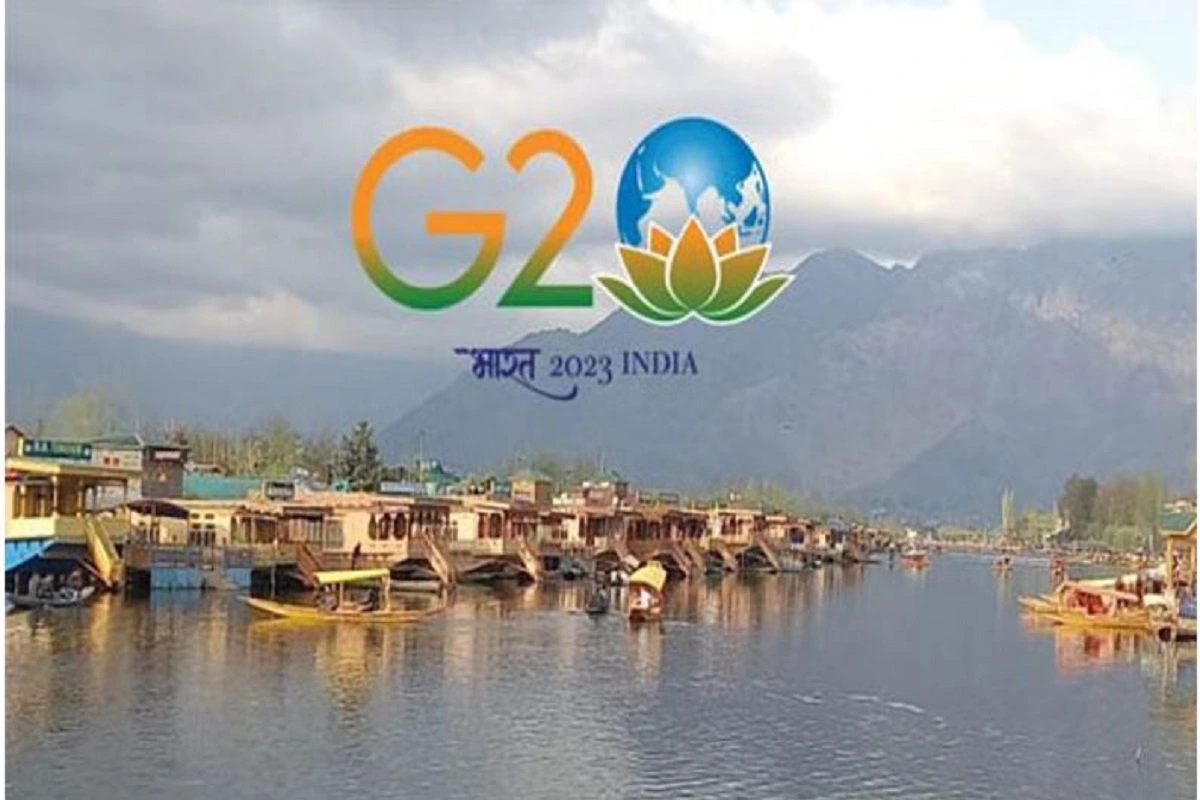
After August 5, 2019 — when the Centre announced its decision to abrogate Jammu and Kashmir’s special status and bifurcate it into two Union Territories — the Himalayan region has remained in the news for its scenic beauty and tourists thronging the union territory in droves.
Media is reporting the good things that are happening in Jammu and Kashmir as Pakistan-sponsored terrorism has waned off after 2019.
The recently held G20 meeting in Srinagar was given wide publicity by the international media with many of them highlighting India’s efforts to restore stability and normalcy in Kashmir.
The G20 was the maiden international event in Jammu and Kashmir after the abrogation of Article 370, a temporary provision of the Constitution. Delegates from 17 countries participated in the summit.
Besides attending the brainstorming sessions, they visited historic places in Srinagar. They vowed to return with their families and friends and promote Jammu and Kashmir as a tourist destinations in their countries.
For the past seventy years, Kashmir-based politicians, who ruled Jammu and Kashmir, had created a notion that Article 370 is a bridge between JK and New Delhi and if it is fiddled with it would push JK into the lap of Pakistan.
Their narrative revolved around telling the people that the JK’s so-called special status is a shield that protects them and they have to safeguard it at any cost.
Regimes that came into power in New Delhi were also misled and misinformed by the former rulers of the erstwhile princely state.
When Narendra Modi became the Prime Minister in 2014, he announced that Bharatiya Janata Party (BJP) stands for ‘ek nishan, ek pradhan and ek samvidhan’ (one symbol, one head and one constitution). He made it amply clear that Jammu and Kashmir was and would remain an integral part of India and that it would be brought at par with the other regions of the country.
Till Modi came into power, no government at the Centre made an attempt to change JK’s status quo and merge it completely with the Union of India. In fact, no leader wanted to take a risk as the JK rulers had created a myth that any such decision could have far-reaching consequences and Kashmir would burn.
From 2014 to 2019, the PM Modi-led regime studied the genesis of the Kashmir problem. It identified the factors that were responsible for Pakistan being able to sustain a proxy war in the region for three long decades, the role of separatists and the funding being provided to the terrorists to keep the pot boiling.
Pertinently, after Pakistan-sponsored terrorists attacked an Army camp at Uri in North Kashmir in 2016, PM Modi-led regime for the first time in 30 years asked the Indian Army to cross the Line of Control (LoC) and carry out surgical strikes at terror training camps in Pakistan occupied Kashmir (PoK).
The strikes were carried out with precision. Prime Minister Narendra Modi watched all the moves of the army personally.
The Indian Army crossing the LoC sent a clear message to Pakistan that terrorism will not be tolerated and all their actions will be avenged.
In February 2019, a suicide bomber of the Jaish-e-Mohammad (JeM) terror outfit rammed a car carrying explosives into a convoy of Central Reserve Police Force (CRPF) at Pulwama in South Kashmir leaving 40 CRPF personnel dead.
Just within 10 days after the attack, Indian Air Force (IAF) jets penetrated deep inside Pakistan territory and bombarded JeM terror camps at Balakot. The air strikes drove home a point that if Pakistan and the terrorists sponsored by it keep on indulging in misadventures on Indian soil, New Delhi’s next step could be harsher.
After the 2019, Pulwama suicide attack, PM Modi-led regime launched a massive crackdown against Pakistan agents in Kashmir. Many of them were arrested. Their funding channels were choked, support systems were dismantled and organizations preaching separatism were banned.
When PM Modi returned to power for the second consecutive term with a thumping majority in May 2019, he assigned the job of resolving the Kashmir problem to his close lieutenant Union Home Minister Amit Shah.
Just within a few months of assuming charge of the Union Home Ministry, Amit Shah moved a Bill in the Parliament to revoke Article 370 in Jammu and Kashmir and on August 5, 2019, the controversial Article which kept J&K on the edge for 70 years was written off.
The erstwhile princely state was reorganized into two Union Territories, Jammu and Kashmir, and Ladakh with an aim to restore the pristine glory of the Himalayan region, which witnessed Pakistan-sponsored onslaught from 1990 to 2019.
The courage and political will exhibited by Prime Minister Modi and Union Home Minister Amit Shah addressed the root cause of terrorism in JK.
During the past three years, Jammu and Kashmir have received investment proposals worth thousands of crores, and 1.88 million tourists visited JK in 2022. More than 5 lakh youth have been provided employment through various self-employment schemes.
New roads and highways have been built. Jammu and Kashmir is on its way to becoming self-reliant vis-a-vis power generation, people are enjoying 5G internet speed, women have been provided with equal opportunities, the train connecting Kashmir with the rest of the country is a few months away and very importantly local recruitment in terror outfits has fallen to zero.
News stories about foreign envoys and tourists visiting Kashmir, new tourist spots coming up in Jammu and Kashmir and Bollywood returning to the UT have replaced the stories of killings and destruction.
In the past, more than three years the ground situation in JK has improved as the PM Modi-led regime has given a befitting reply to terrorists, separatists and Pakistan, who sponsored, funded and sustained them.
To read more such news, download Bharat Express news apps


















